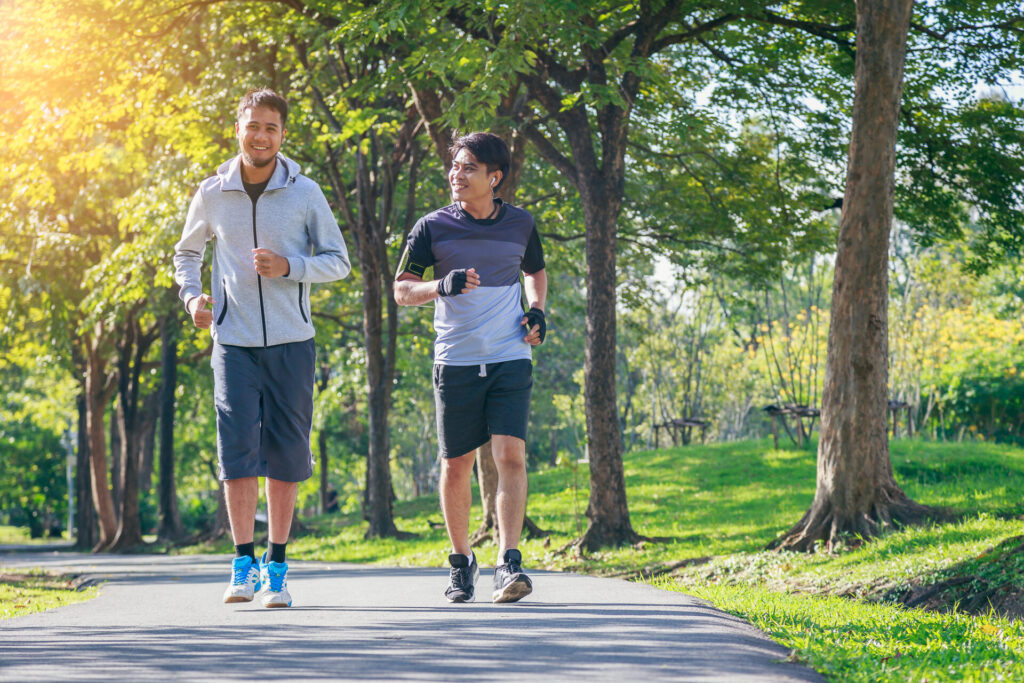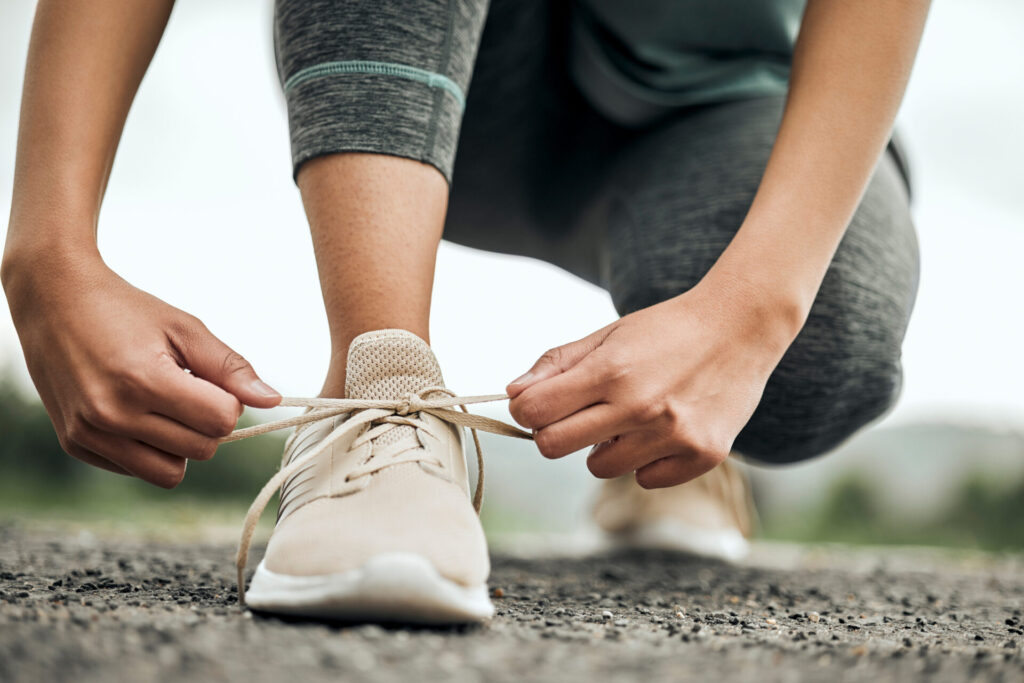Read our beginner’s guide to running before you hit the pavement.
A foot in the right direction
Just making the decision to start jogging is already a step in a healthy direction. Running reduces blood pressure, cholesterol and risk of heart disease, and can increase cardiovascular fitness, meaning there is less strain on your heart to fuel you throughout the day. Mentally, jogging is also a great stress reliever. Marra suggests that people who are new to exercise consult a physician before they begin running.
Start slowly
The number one mistake beginners make is doing too much too soon. “They go all in, and that’s when injuries happen. Then it deters them in the long term,” Marra says. When starting out, Nike Toronto running coach and chiropractor Brittany Moran suggests focusing more on time than kilometres and doing run/walk intervals. Start with 5 to 10 minutes of walking, alternating with one minute of running, then two minutes of running for 5 to 10 minutes, and finishing with a 10-minute walk. Do these two to three times a week and increase your time by 10 per cent each week to work up your kilometres.

If the shoe fits
The perfect shoe is different for everyone, depending on individual anatomy and gait. “If you try on running shoes, make sure you run around the store in them and make sure that everything feels comfortable,” Moran says. Layering is key when it comes to clothing. Start with a sweat-wicking base layer and, depending on how cold it is, one to two additional long-sleeved tops. For outer attire, a windbreaker jacket is key. Moran advises dressing for 10 degrees warmer than the temperature outside (including wind chill): if it’s 10˚C, dress as if it’s 20˚C, to account for your body heating up as you go.
Training goes beyond the actual run
It’s also important to stretch before and after your run. Marra suggests dynamic stretching beforehand —movements that allow your joints and muscles to go through a full range of motion—like swinging your leg back and forth or standing knee hugs. Post-run, do 5 to 10 minutes of static stretching to help prevent injury, especially hamstring, calves, glutes, and quadriceps stretches. And stay hydrated. Marra recommends drinking two to four litres of water daily or more if you’re especially active.
Get the gear
Shop for shoes, base layers and more from Altitude Sports online, and earn 4% in CAA Dollars®. Go to caaneo.ca/shoponline for details.

